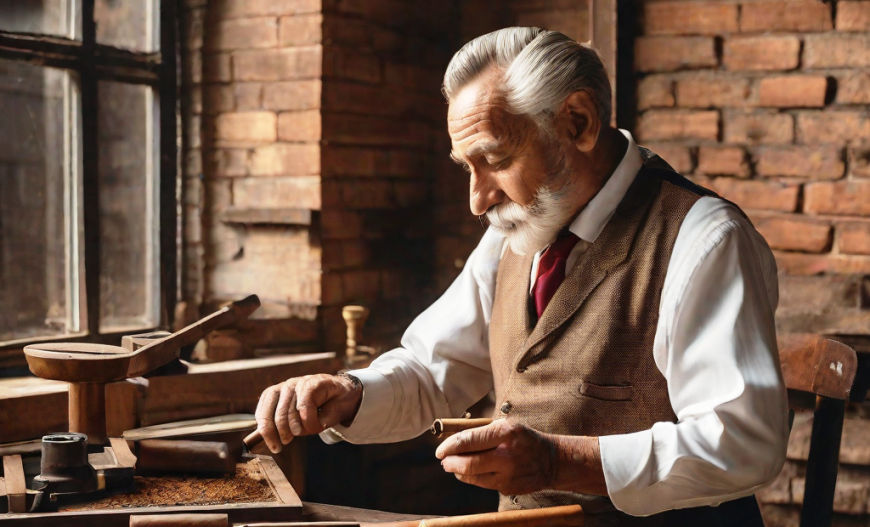- Tobacco Leaves: For the filler, binder, and wrapper.
- Filling Blend: A mix of tobacco leaves for the cigar’s interior.
- Binder Leaf: Wraps around the filler to hold it together.
- Wrapper Leaf: The outermost layer, providing the cigar’s appearance and contributing to its flavor.
Steps:
Prepare the Filler:
- Select and blend different types of tobacco leaves for the filler. The blend affects the cigar’s flavor profile.
- Cut the leaves into appropriate sizes, ensuring a smooth and consistent burn.
Prepare the Binder:
- Choose a high-quality leaf to serve as the binder.
- Cut it into a strip that will wrap around the filler smoothly.
Prepare the Wrapper:
- Select a visually appealing and high-quality leaf for the wrapper.
- Ensure the wrapper leaf is elastic and without blemishes.
Roll the Filler:
- Take a bunch of filler leaves and arrange them evenly to create the cigar’s core.
- Roll the filler tightly, ensuring an even density from end to end.
Apply the Binder:
- Place the rolled filler in the center of the binder leaf.
- Roll the binder around the filler, ensuring it holds together but is not too tight.
Apply the Wrapper:
- Place the binder-wrapped filler in the center of the wrapper leaf.
- Roll the wrapper around the binder, covering the entire cigar smoothly.
Cap the Cigar:
- Trim excess wrapper leaf from both ends of the cigar.
- Apply a small, circular piece of wrapper leaf to form the cap, securing the end.
Shape and Size:
- Mold the cigar into the desired shape, usually a cylinder with rounded edges.
- Use a mold to maintain the cigar’s shape during the drying process.
Aging and Drying:
- Allow the cigar to age and dry, which enhances its flavor and ensures a consistent burn.
Quality Control:
- Inspect the cigar for any imperfections, ensuring it meets quality standards.
It’s important to note that rolling cigars is an art mastered by skilled artisans. If you’re interested in trying, consider attending a cigar rolling workshop or learning from an experienced cigar roller. Additionally, many factors, including the type of tobacco and rolling technique, influence the cigar’s final taste and appearance.
